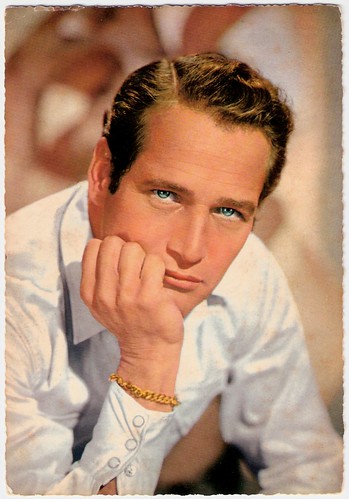
German postcard by Krüger, no. 902/261.

Italian postcard by Bromofoto, Milano, no. 1412. Photo: Warner Bros.
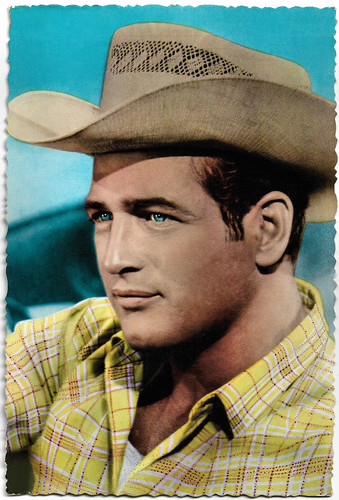
Spanish postcard by Archivo Bermejo, no. C.6., 1963. Photo: Paramount / Filmax. Photo: Paul Newman in Hud (Martin Ritt, 1963).

West-German Kolibri postcard by Friedrich W. Sander-Verlag, Minden/Westf., no. 2863. Photo: Warner Bros. Paul Newman in Harper (Jack Smight, 1966).

Italian postcard by Edizioni Beatrice D'Este, no. 20020. Sent by mail in 1984.
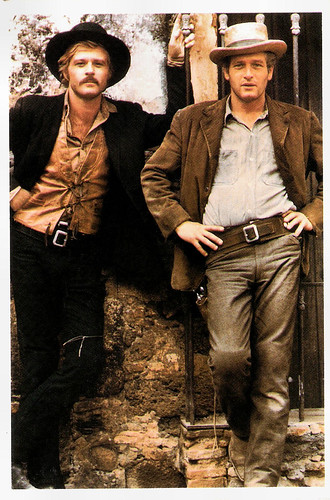
American postcard by Fan Club Post Cards, New York, N.Y., no. PC 22. Paul Newman and Robert Redford in Butch Cassidy and the Sundance Kid (George Roy Hill, 1969).
The much admired and popular New York Actors Studio
Paul Leonard Newman was born in 1925, in Shaker Heights, Ohio, a suburb of Cleveland. He was the second son of Arthur Sigmund Newman and Theresa Fetsko. His father was a Jewish businessman who owned a successful sporting goods store. His mother was a practising Christian Scientist interested in the creative arts, and it rubbed off on her son. At age 10, he performed in a stage production of 'Saint George and the Dragon' at the Cleveland Play House. He also acted in high school plays.
By 1950, the 25-year-old Newman had been kicked out of Ohio University, where he belonged to the Phi Kappa Tau fraternity, for unruly behaviour (denting the college president's car with a beer keg), served three years in the United States Navy during World War II as a radio operator, graduated from Ohio's Kenyon College, married his first wife, actress Jacqueline 'Jackie' Witte, and had his first child, Scott. That same year, his father died. When he became successful in later years, Newman said if he had any regrets it would be that his father was not around to witness his success. He brought Jackie back to Shaker Heights and he ran his father's store for a short period.
Then, knowing that wasn't the career path he wanted to take, he sold his interest in the store to his brother and moved with Jackie and Scott to New Haven, Connecticut. There he attended Yale University's School of Drama. While doing a play there, Newman was spotted by two agents, who invited him to come to New York City to pursue a career as a professional actor. After moving to New York, he acted in guest spots for various television series, and in 1953 came a big break. He got the part of an understudy of the lead role in the successful Broadway play 'Picnic' by William Inge. Through this play, he met actress Joanne Woodward, who was also an understudy in the play. While they got on very well and there was a strong attraction, Newman was married and his second child, Susan, was born that year.
During this time, Newman was accepted into the much admired and popular New York Actors Studio, although he did not actually audition. In 1954, a film Newman was very reluctant to do was released, the failed costume drama The Silver Chalice (Victor Saville, 1954). He considered his performance in this costume epic to be so bad that he took out a full-page ad in Variety apologising for it to anyone who might have seen it. He immediately wanted to return to the stage, and performed in 'The Desperate Hours'. In 1956, he got the chance to redeem himself in the film world by portraying boxer Rocky Graziano in Somebody Up There Likes Me (Robert Wise, 1956) with Pier Angeli. The role of Rocky was originally awarded to James Dean, who died before filming began. Critics praised Newman's performance.
Dean also was signed to play Billy the Kid in The Left Handed Gun (Arthur Penn, 1958), but that role was also inherited by Newman after Dean's death. With a handful of films to his credit, he was cast in The Long, Hot Summer (1958), an acclaimed adaptation of a pair of William Faulkner short stories. His co-star was Joanne Woodward. During the shooting of this film, they realised they were meant to be together and by now, so did his then-wife Jackie, who gave Newman a divorce. He and Woodward wed in Las Vegas in January 1958. They went on to have three daughters together. They raised them in Westport, Connecticut. In 1959, Newman received his first Academy Award nomination for Best Actor, in Cat on a Hot Tin Roof (Richard Brooks, 1958), based on the Pulitzer Prize-winning play by Tennessee Williams. Well-received by critics and audiences, Cat on Hot Tin Roof was MGM's most successful release of 1958 and became the third highest-grossing film of that year.

French postcard by Editions P.I., Paris, offered by Les Carbones Korès 'Carboplane', no. 945. Photo: 20th Century Fox.

Belgian postcard, no. 5451.

Dutch postcard by Uitg. Takken, Utrecht, no. 3265.

West-German postcard by Kolibri-Verlag, Minden-Westf, no. 395. Photo: M.G.M. Paul Newman in Cat on a Hot Tin Roof (Richard Brooks, 1958).

Dutch postcard by Uitg. Takken, no. AX 4464. Photo: M.G.M.

German postcard by Kolibri-Verlag G.m.b.H., Minden-Westf., no. 1716. Photo: Paramount. Paul Newman in Hud (Martin Ritt, 1963).

Big East-German postcard by Progress Film-Verleih, Berlin, no. 22/84. Photo: Warner Bros. Paul Newman in Fort Apache the Bronx (Daniel Petrie, 1981).
Superstar status and Oscar nominations
Paul Newman travelled back to Broadway to star in Tennessee Williams' 'Sweet Bird of Youth'. Upon his return to the West Coast, he bought himself out of his Warner Bros. contract before starring in the smash From the Terrace (Mark Robson, 1960) with Joanne Woodward. Exodus (Otto Preminger, 1960), another major hit, quickly followed.
The 1960s would bring Paul Newman into superstar status, as he became one of the most popular actors of the decade. In 1961, he played one of his most memorable roles as pool shark 'Fast' Eddie Felson in The Hustler (Robert Rossen, 1961) with Jackie Gleason and Piper Laurie. It garnered him the first of three Best Actor Oscar nominations during the decade.
The other two were for the Western Hud (Marin Ritt, 1963), and the superb chain-gang drama Cool Hand Luke (Jack Smight, 1967). He also appeared in the political thriller Torn Curtain (Alfred Hitchcock, 1966) with Julie Andrews. The film, set in the Cold War, is about an American scientist who appears to defect behind the Iron Curtain to East Germany.
Other minor hits were the mystery Harper (Jack Smight, 1966), with Lauren Bacall, and the Western Hombre (Martin Ritt, 1967), based on the novel by Elmore Leonard and co-starring Fredric March. In 1968, his debut directorial effort Rachel, Rachel (Paul Newman, 1968) was given good marks. He directed three actors to Oscar nominations: Joanne Woodward (Best Actress, Rachel, Rachel (1968)), Estelle Parsons (Best Supporting Actress, Rachel, Rachel (1968)), and Richard Jaeckel (Best Supporting Actor, Sometimes a Great Notion (1971)). Newman won a Golden Globe Award for his direction of Rachel, Rachel (1968).
1969 brought the popular screen duo of Newman and Robert Redford together for the first time when Butch Cassidy and the Sundance Kid (George Roy Hill, 1969) was released. It was a box office smash. Through the 1970s, Newman had hits and misses from such popular films The Sting (George Roy Hill, 1973) with Robert Redford, which won the 1973 Best Picture Oscar, and the star-studded disaster epic The Towering Inferno (John Guillermin, 1974), to lesser-known films as the Western The Life and Times of Judge Roy Bean (Robert Altman, 1972) with Jacqueline Bisset, to a cult classic, the sports comedy Slap Shot (George Roy Hill, 1977) with Michael Ontkean. In 1978, Newman's only son, Scott, died of a drug overdose. After Scott's death, Newman's personal life and film choices moved in a different direction.

West-German postcard by Kolibri-Verlag, Minden-Westf, no. 2485. Photo: M.G.M. Paul Newman in Somebody Up There Likes Me (Robert Wise, 1956).

French postcard by Editions P.I., license holder for UFA, no. FK 4663. Photo: Terb-Agency.

West-German postcard by Netter's Starverlag, Berlin.

British postcard by "Snappy Pop Pics Productions", Mini Series.

Italian postcard by Max.

Italian postcard by Max. Photo: DD&E / Peter Schroeder.

Italian postcard by Max. Photo: Tim Zimberoff.

Spanish postcard by Kores, no. 7042. Photo: 20th Century Fox. Paul Newman in The Long, Hot Summer (Martin Ritt, 1958).
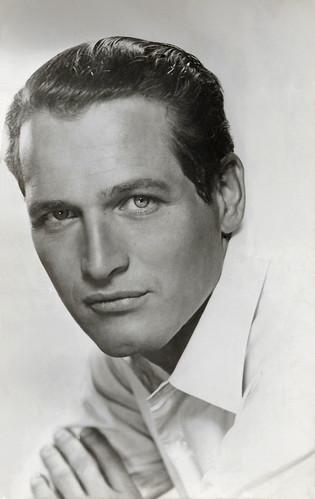
Spanish postcard by Edic. Raker, Barcelona, no. 133. Photo: Warner Bros. Paul Newman in The Young Philadelphians (Vincent Sherman, 1959).
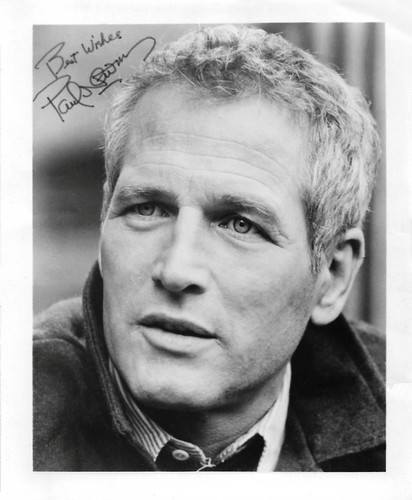
Vintage autograph card.

English postcard in the Athena Star Collection, London, no. 9238. Paul Newman in Butch Cassidy and the Sundance Kid (George Roy Hill, 1969).
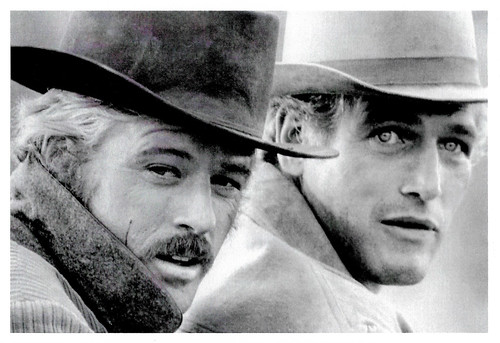
French postcard by INPI. Photo: Robert Redford and Paul Newman in Butch Cassidy and the Sundance Kid (George Roy Hill, 1969).
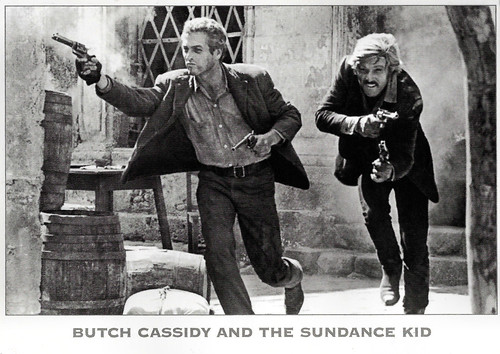
British postcard in the Film & Music Personalities series by Pyramid, Leicester, no. PC 2038. Paul Newman and Robert Redford in Butch Cassidy and the Sundance Kid (George Roy Hill, 1969).
The highest-grossing film of his career
Paul Newman's acting work in the 1980s and on is what is often most praised by critics today. He became more at ease with himself, which was evident in The Verdict (Sidney Lumet, 1982) with Charlotte Rampling, for which he received his sixth Best Actor Oscar nomination. In 1987, he finally received his first Oscar for The Color of Money (Marin Scorsese, 1986) with Tom Cruise, almost thirty years after Woodward had won hers.
Friend and director of Somebody Up There Likes Me (1956), Robert Wise accepted the award on Newman's behalf as the actor did not attend the ceremony. Previously, Newman had been nominated as the same character in The Hustler (Robert Rossen, 1961). In total, he was nominated for the Oscar nine times: Best Lead Actor for Cat on a Hot Tin Roof (Richard Brooks, 1958), The Hustler (Robert Rossen, 1961), Hud (Marin Ritt, 1963), Cool Hand Luke (Stuart Rosenberg, 1967), Absence of Malice (Sydney Pollack, 1981), The Verdict (Sidney Lumet, 1982), The Color of Money (Martin Scorsese, 1986), Nobody's Fool (Robert Benton, 1994)) and finally for Best Supporting Actor in Road to Perdition (Sam Mendes, 2002).
In 1994 Newman also played alongside Tim Robbins as the character Sidney J. Mussburger in the Coen Brothers' comedy The Hudsucker Proxy. Films were not the only thing on his mind during this period. A passionate race car driver since the early 1970s (despite being colour-blind), he was a co-founder of Newman-Haas Racing in 1982. He also founded 'Newman's Own', a line of food products, featuring mainly spaghetti sauces and salad dressings. The company made more than $100 million in profits over the years, all of which he donated to various charities. He also started The Hole in the Wall Gang Camps, an organization for children with serious illnesses. He was as well known for his philanthropic ways and highly successful business ventures as he was for his legendary actor status.
Newman's marriage to Woodward lasted a half-century. Connecticut was their primary residence after leaving Hollywood and moving East in 1960. Renowned for his sense of humour, in 1998 he quipped that he was a little embarrassed to see his salad dressing grossing more than his films. During his later years, he still attended races, was much involved in his charitable organisations, and in 2006, he opened a restaurant called Dressing Room, which helps out the Westport Country Playhouse, a place in which Newman took great pride. In 2003, Newman appeared in a Broadway revival of Thornton Wilder's 'Our Town', receiving his first Tony Award nomination for his performance. The animated Disney-Pixar comedy Cars (John Lasseter, 2006) was his final film. It was the highest-grossing film of his career.
In 2007, while the public was largely unaware of the serious illness from which he was suffering, Newman made some headlines when he said he was losing his invention and confidence in his acting abilities and that acting was "pretty much a closed book for me". A smoker for many years, Paul Newman died in 2008, aged 83, from lung cancer. With his first wife Jackie, he had three children, Scott, Stephanie, and Susan. Susan Kendall Newman is well known for stage acting and her philanthropic activities. His three daughters with Joanne Woodward are actress Melissa Newman, Nell Potts, and Claire Newman. Nine years after Paul Newman's death, he reprised his role as Doc Hudson in Cars 3 (2017): unused recordings from Cars (2006) were used as new dialogue.

Italian postcard in the series Artisti di Sempre by Ed. Rotalfoto, Milano, no. 291.

French postcard, no. 111.

French postcard by EDUG, no. 152.

French postcard by Editions F. Nugeron in the Signes du zodiaque series, no. 2, Paul Newman - Verseau (Aquarius). Paul Newman in The Left Handed Gun (Arthur Penn, 1958).

Italian postcard by Edizioni Beatrice D'Esti, no. 20161. Paul Newman in Pocket Money (Stuart Rosenberg, 1972).
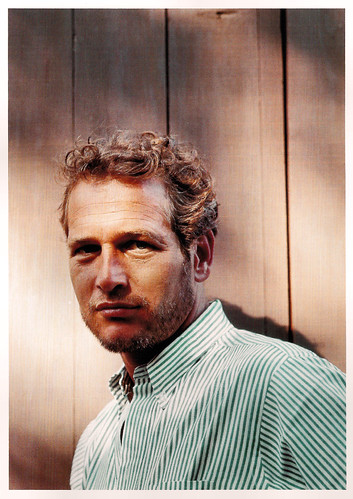
American postcard by Fotofolio, no. 2868. Photo: Milton H. Greene. Caption: Paul Newman, Connecticut, 1964.
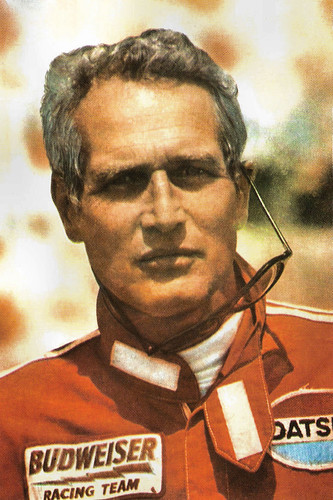
Romanian postcard by Casa Filmului Acin, no. C.P.V.S. c-sa 53066.

Romanian postcard by Casa Filmului Acin.
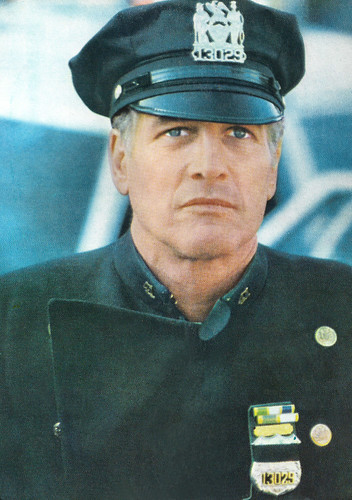
Romanian postcard by Casa Filmului Acin. Paul Newman in Fort Apache the Bronx (Daniel Petrie, 1981).
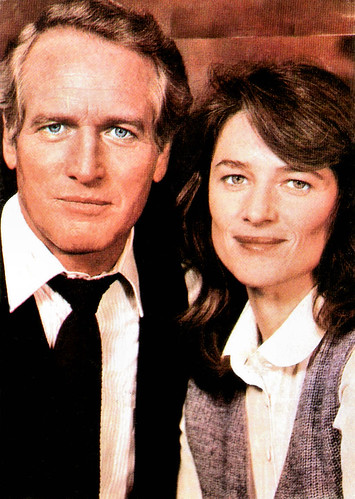
Romanian postcard by Casa Filmului Acin, no. 43079. Photo: Charlotte Rampling and Paul Newman in The Verdict (Sidney Lumet, 1982).

British postcard by Superior, no. PC 9.
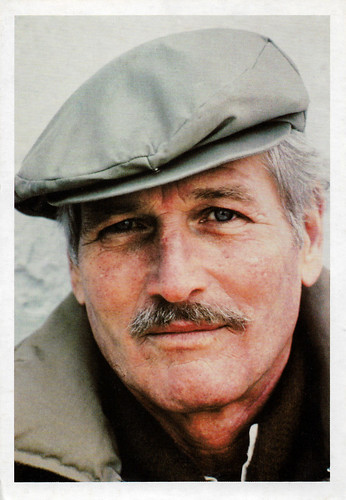
French postcard by Editions Humour à la Carte, Paris, no. ST-118.
Sources: Tom McDonough/Robert Sieger (IMDb), Jason Ankeny (AllMovie), AllMovie, Wikipedia, and IMDb.
This post was last updated on 16 July 2023.
No comments:
Post a Comment